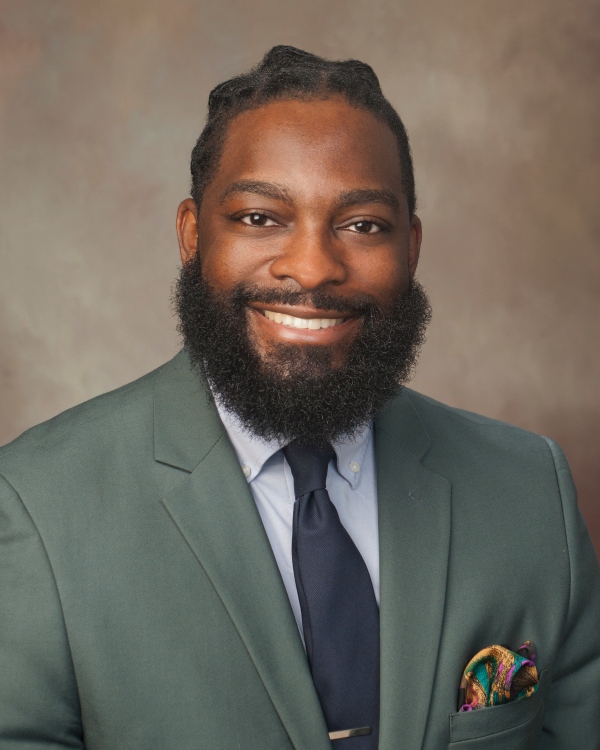HOPE Joins Inclusiv in Uplifting Black-led Financial Institutions
March 1st, 2024
By Kiyadh Burt, Director of Policy
Earlier this week, Inclusiv hosted a webinar entitled “Advancing Economic Opportunity for Black Communities in the Deep South” in which HOPE Policy Institute and Sixth Avenue Baptist Federal Credit Union were invited to share insights on their work to improve the economic conditions of Black communities. Black-led financial institutions, like HOPE and Sixth Avenue Baptist, play a pivotal role in addressing historic, systemic barriers to financial inclusion, homeownership, and small business capital that builds on the historical efforts of the Black community to strive towards self-determination.
Historical Significance
The legacy of Black financial institutions traces back to Reconstruction with the creation of the Freedman’s Savings Bank in 1865. The Freedman’s Savings Bank provided capital and financial services to formerly enslaved African Americans, African American veterans, and their families at the end of the Civil War. In addition to increasing access to capital, the bank also increased the resiliency of community institutions such as hospitals and schools.[1] Credit associations, Black-owned banks, and mutual-aid societies also proliferated Black communities across the country as Black communities were systemically denied access to wealth and community building opportunities.[2] St. Luke Penny Savings Bank, a notable example, served African Americans and children with checking and savings accounts in Richmond, VA at a time when many Blacks were barred from accessing services at white-led banks. Maggie Walker established the bank in 1903 and on the first day of opening the bank had 280 deposits and a balance of over $9,000 demonstrating that the demand for financial services in the Black community was high.[3] Black owned financial institutions were formed in the Deep South as well. For example, the Alabama Penny Savings Bank, founded in 1890, was one of the first Black-owned, Black-operated banks in the United States.[4]
Like the institutions that came before it, HOPE, a Black – led loan fund, credit union, and policy institute in the Deep South, also finds its origin rooted in this co-operative history. Members of Anderson United Methodist Church founded HOPE in 1995 to provide financial services alongside their mutual aid efforts in Jackson, MS. At the time, it was the only church-based credit union in the state. HOPE continued its missions by joining efforts with other co-operative efforts such as the East Central Federal Credit and the Tri-County Credit Union. Subjected to unscrupulous financing for equipment and inventory, in the late 1970s, a group of timber workers, supported by the United Woodcutters Association, organized the East Central Federal Credit Union to ensure protection from predatory practices by wood dealers. Today, HOPE’s Louisville branch still serves the families and neighbors of those timber workers, continuing a long history of fighting for fair treatment of Black and white workers in the Pine Belt. In 2017, HOPE entered Alabama through a merger with Tri-County Credit Union, successor to Montgomery Teachers Credit Union, formed in 1950 to serve Black educators in the state’s capital city at a time when explicit racial discrimination in banking was prevalent.
Over the course of HOPE’s 30-year history, HOPE has increased financial inclusion among the region’s most underserved areas through community and economic development, advocacy and coalition building, and offering affordable financial products and services. To date, HOPE has generated more than $3.9 billion in financing and related services that has improved the lives of more than 2.7 million people in Alabama, Arkansas, Louisiana, Mississippi and Tennessee.
Community Impact
Black-led financial institutions advance economic mobility in Black communities through products designed to meet their unique need. For example, HOPE offers an in-house mortgage product, the Affordable Housing Program (AHP), designed to address systemic obstacles for potential homebuyers lacking a down payment. Through the AHP, mortgages are manually underwritten, and nontraditional indicators of credit repayment history are considered. The product also discounts deferred student debt, does not require mortgage insurance, and accepts credit scores as low as 580. Also, of critical importance, the AHP allows for a loan-to-value (LTV) of 100% – eliminating down payment barriers.
From 2018 – 2023, HOPE has closed 1082 mortgages for $233 million. Of those mortgages, 77% by number and 76% by dollar were mortgages originated through HOPE’s AHP. The AHP is one of the single most effective tools available to HOPE to build wealth in the Black community. Of the 792 AHP mortgages originated, 78% were to Black borrowers, 57% were to women led households, and 89% were to first-time homebuyers. Over this time period, HOPE’s net mortgage charge offs were less than 1% and never rose above 67 basis points in a given year.
Overall, Black-led financial institutions meet the needs of Black communities in presence and products. The FDIC finds that six out of 10 people living in the service area of Black owned banks are Black, in contrast to six out of 100 for banks that are not Black-led. Moreover, Black owned financial institutions originate a substantially higher proportion of mortgages and small business loans to Black borrowers than other financial institutions.[5]
Such findings underscore the critical importance Black led banks and credit unions play not only in meeting the financial needs of people living in communities historically underserved by traditional financial institutions, but in their contributions to a healthy economy that works for all.
This history and impact of HOPE and like Black-led financial institutions is Black history. As we continue the fight for financial freedom and inclusion, Black-led financial institutions will continue to play a pivotal role in creating stability for Black communities.
[1] Monique Nelson. (2-14). “The Freedman’s Savings Bank: A Historic Place in the Financial Empowerment of African Americans”. https://home.treasury.gov/the-freedmans-savings-bank-a-historic-place-in-the-financial-empowerment-of-african-americans
[2] Nembhard, J.G. (2014). “Collective Courage: A history of African American cooperative economic thought and practice”. Penn State Press.
[3] National Park Service. (2017). “The St. Luke Penny Savings Bank”. https://www.nps.gov/mawa/the-st-luke-penny-savings-bank.htm
[4] Alabama Legacy Moments. (2017). “Penny Savings Bank”. http://www.alabamalegacy.org/penny-savings-bank/
[5] Ed Sivak. (2020). “Minority Depository Institutions in the Deep South”. HOPE Policy Institute. http://hopepolicy.org/blog/minority-depository-institutions-in-the-deep-south/






